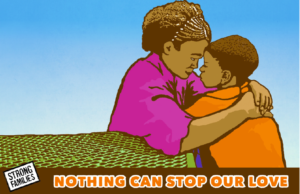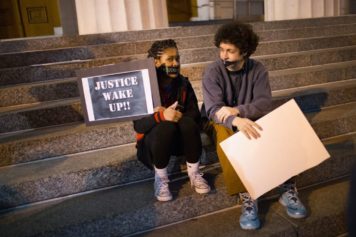Prison certainly takes a toll on those who are incarcerated, but families pay a heavy price as well. The $80 billion a year the U.S. spends on prisons and jails far outpaces social and infrastructure spending on items such as education, transportation and housing. But families and communities of the incarcerated pay hidden costs of mass incarceration, a toll which is often left unreported.
A new report from the Ella Baker Center for Human Rights, Forward Together, and Research Action Design, in collaboration with 20 community-based organizations across the U.S., examines the ways in which families are impacted by a loved one’s entanglement in the criminal justice system. Who Pays? The True Cost of Incarceration on Families includes surveys of 712 formerly incarcerated people and 368 family members, 27 employers and 34 focus groups with family members and others affected by incarceration.
The research found that many of the costs and penalties related to imprisonment extend far beyond an individual’s prison sentence, impacting their families and communities even after the person is released.
Who Pays? found that the long-term costs to families amount to more than legal expenses, and phone and visitation costs, and include care for untreated physical ailments, mental health support, the loss of children placed into the foster care system, lost job and educational opportunities for those who are imprisoned, and permanent loss of income. These costs—fines and fees alone can average $13,607 for those who earn less than $15,000 a year–often drown a family in debt. Additionally, 67 percent of formerly incarcerated individuals were still unemployed or underemployed five years after being released from prison.
An alarming 65 percent of families were unable to meet the basic needs of their family, while nearly half struggled with basic food and housing needs. Sadly, 34 percent of families were driven into debt simply through the costs of maintaining contact with a loved one, including phone calls and visitation.
Moreover, women bear the brunt of the financial burden, accounting for 83 percent of family members responsible for court-related costs associated with the conviction of a loved one. Given that prison increasingly has become a punishment reserved for Black and Brown people, these women are disproportionately women of color. Half face health problems such as anxiety, post-traumatic stress disorders and nightmares, and over two-thirds (67 percent) help their formerly incarcerated family member find housing once they were released. Two in five families became ineligible for public housing once they were reunited with their imprisoned loved one, due to rejection, eviction or ineligibility due to a criminal record.
Incarceration perpetuates a cycle of poverty, the study found, as nearly 40 percent of all crimes are related to poverty, and nearly all incarcerated people (80 percent) are low income. Further, two-thirds of people in jail fall below the poverty line.
Reforms to the system must take into account the impact of criminal justice policy on these families and communities, and remove the barriers these people face.
Who Pays? makes a set of three recommendations to turn things around, including 1) restructuring state policies to reduce the number of prisoners and their sentences, and reinvest the savings into recidivism programs, substance abuse and housing; 2) removing barriers to resources and services such as food stamps, training and education; and 3) restoring opportunities including job training and subsidized employment services.





